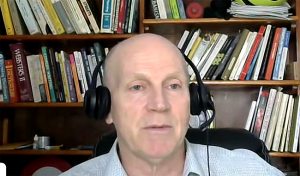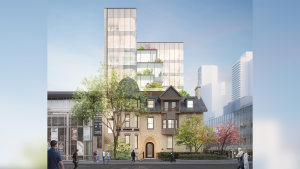The latest Transport Futures webinar featured an international cast of highway communications specialists who illustrated in spirited discussions the challenges that politicians and professionals face as they attempt to achieve project buy-in.
Two of the panellists sparred over technical definitions — when does unmet demand become induced demand? — while transportation professionals were criticized for their tendency to use engineering jargon in their public communications, thus failing to explain important mobility policy to taxpayers.
The three-hour webinar, held April 13, was billed as Highway Communications: Framing Benefits and Costs for Diverse Audiences.
Transport Futures founder Martin Collier teed up the session, explaining that communication has become a central component of transportation delivery, with proponents required to devise messaging strategies that respond to demands for transparency from a broad range of constituents.
To win over citizens when devising policies that might include billion-dollar projects featuring HOV lanes, dynamic pricing, managed lanes or complex project delivery models, proponents need to establish one thing: trust.
That became clear as the Metropolitan Transportation Commission (MTC) in California’s Bay Area began a consultation process, explained panellist Alex Eisenhart, an MTC public information officer.

MTC
The initiative was called the Preparing the Next Generation Bay Area Freeways Study.
“As our focus groups went on, it became more and more clear to me that solving this inherent lack of trust needed to be our North Star,” said Eisenhart.
“When we introduced the concept of freeway pricing as a potential solution to advance that future vision, we heard, as expected, a great deal of opposition, but specifically, we got a more detailed understanding of why they oppose the idea. They said things like, ‘This is just another money grab.’”
Education efforts included discussions of how West Oakland, with a large Black population, had been squeezed by a series of freeways that eventually encircled it. And citizens had no idea how highways and public transit were paid for.
Following an extensive consultation and awareness process, the MTC was able to point to poll results indicating successes in changing minds and perhaps building trust, Eisenhart said.
Up the West Coast, the State of Oregon decided to introduce a new highway revenue system in place of the traditional gas tax. The new road user fee, a per-mile charging system named OReGO that was the first of its kind in the U.S., was launched in 2015.
The Oregon Department of Transportation embarked on an extensive community engagement and education strategy as many Oregonians didn’t realize the gas tax is an unsustainable funding source, explained consultant Colleen Gants.
The outreach strategy that ensued included not only in-depth explanations of Oregon’s transportation funding system but also lessons on the benefits of good highways and feedback from members of the community to help shape further initiatives. Oregonians love hiking, Gants noted, and the only way to access their favourite mountain trails is via a highway, they were told.
“It’s all about awareness. I mean, how much do things cost? How much is the gas tax? How much does it really cost to drive? Without a continuing education program, how will we ever get people to accept the solution to a problem they don’t even know they have?” said Gants.
Panel moderator Vince Versace, director, news media for the Daily Commercial News and Journal of Commerce, suggested a major takeaway of the day’s presentations was that project owners and their teams should focus on four communications goals: simplicity, clarity, transparency and relatability.
“All the filler words, how much of that stuff do we have to dive through,” said Versace of journalists who play a role in explaining policy. “As writers, they have to get rid of the bumph, get to the core.”

Toole Design Group
Panellist Ian Lockwood, a livable transportation engineer with Toole Design Group based in Florida, argued the transportation community has hijacked the language by expressing land use and mobility issues in terms of the needs of automobile drivers.
“Keep in mind that automobiles are less than one per cent of the history of cities, and they call all that other stuff ‘alternative modes of transportation’ as if motorists were normal and everything else was alternative, kind of abnormal or strange,” said Lockwood.
Several times Toronto Metropolitan University professor of real estate management Murtaza Haider weighed in on assertions of his fellow panellists, saying he was playing the “devil’s advocate” in pointing out, among other arguments, that while transit is more environmentally friendly, it is not faster.
Highways are designed to move personal automobiles faster and taking transit means a slower trip, he said, a point all research backs up.
As for Eisenhart’s suggestion that building more roads tends to create induced demand for more vehicles, Haider, who writes a column for Post media, said, “The reality is that it’s not induced demand, it’s the unmet demand that then manifests on the road system extensions.”
The next webinar in the highway planning series, taking place on April 20, will focus on construction and operations. As a proud sponsor, DCN provides our subscribers with a 10% discount using promo code DCN23.




Recent Comments